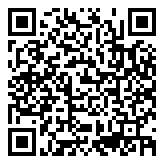- Home
- About Us
- IT Services
- Understanding IT
- Understanding Shadow IT
- Understanding Your Virtual Identity
- Understanding the Modern Office
- IT Threat Glossary
- Understanding Business Continuity
- Windows Server 2003: End of Life
- Understanding the Internet of Things
- Understanding Network Security
- Understanding SOX
- Understanding BYOD
- Understanding PCI DSS
- Windows XP End of Life
- Understanding HIPAA
- Cloud Computing
- News & Events
- Blog
- Support
- Contact Us
- Home
- About Us
-
IT Services
-
Understanding IT
- Understanding Shadow IT
- Understanding Your Virtual Identity
- Understanding the Modern Office
- IT Threat Glossary
- Understanding Business Continuity
- Windows Server 2003: End of Life
- Understanding the Internet of Things
- Understanding Network Security
- Understanding SOX
- Understanding BYOD
- Understanding PCI DSS
- Windows XP End of Life
- Understanding HIPAA
- Cloud Computing
- News & Events
- Blog
- Support
- Contact Us
Managed IT Force Blog
Tip of the Week: What’s the Point of CC and BCC in My Email?
We’ve all seen the fields in our email, CC and BCC, and most of us have probably used them before. Let’s consider where we get those terms, and how each of them is properly used.
Where Do CC and BCC Come From?
CC and BCC are holdovers from the good old days of paper communication, where it was common practice to carbon copy a document by layering a carbon sheet between two pieces of paper. When a writing utensil applies pressure to the top sheet of paper, the carbon is applied to the second, making (for all intents and purposes) a perfect copy of the message.
For the time, this method of duplication was efficient and effective, and can still be seen in certain contexts.
In the context of an email, CC—modern shorthand for carbon copy—simply means that you are sending a copy of the message to another recipient, whereas BCC—or blind carbon copy—signifies that the copy is to be sent to a recipient without the other recipients seeing that the BCC’ed person was added as a contact.
When Should You Use CC and BCC?
In fairness, there doesn’t seem to be much difference between CCing someone and sending them a regular email… So why make such a big deal about using the CC field at all?
In a word, manners. While there are few differences between the “To” field and the “CC” field, the intended use of each is the notable exception. “To” is the field that you fill out to send an email to the main recipients. “CC” is what you should use when the recipient isn’t directly involved with the conversation, but they should still be kept in the loop.
Basically, you should use CC when you want someone to have a copy of an email to reference.
BCC, on the other hand, offers its own utilities. When sending an email to a recipient in the BCC field, any of the other recipients will not see who the email was sent to. It is useful for your recipient’s privacy, as well as sending messages to a long list of recipients.
Hopefully, this will help you use your email more effectively as a communication tool.
Managed IT Force can help you with other variables in your IT to help use it all as effectively as possible. Give us a call at 724-473-3950 to find out what we can do for you.
About the author
Dan has 25 years of progressive experience in the IT industry. He has led three successful companies focused on small and medium business IT solutions since 1997.
Tag Cloud


Comments